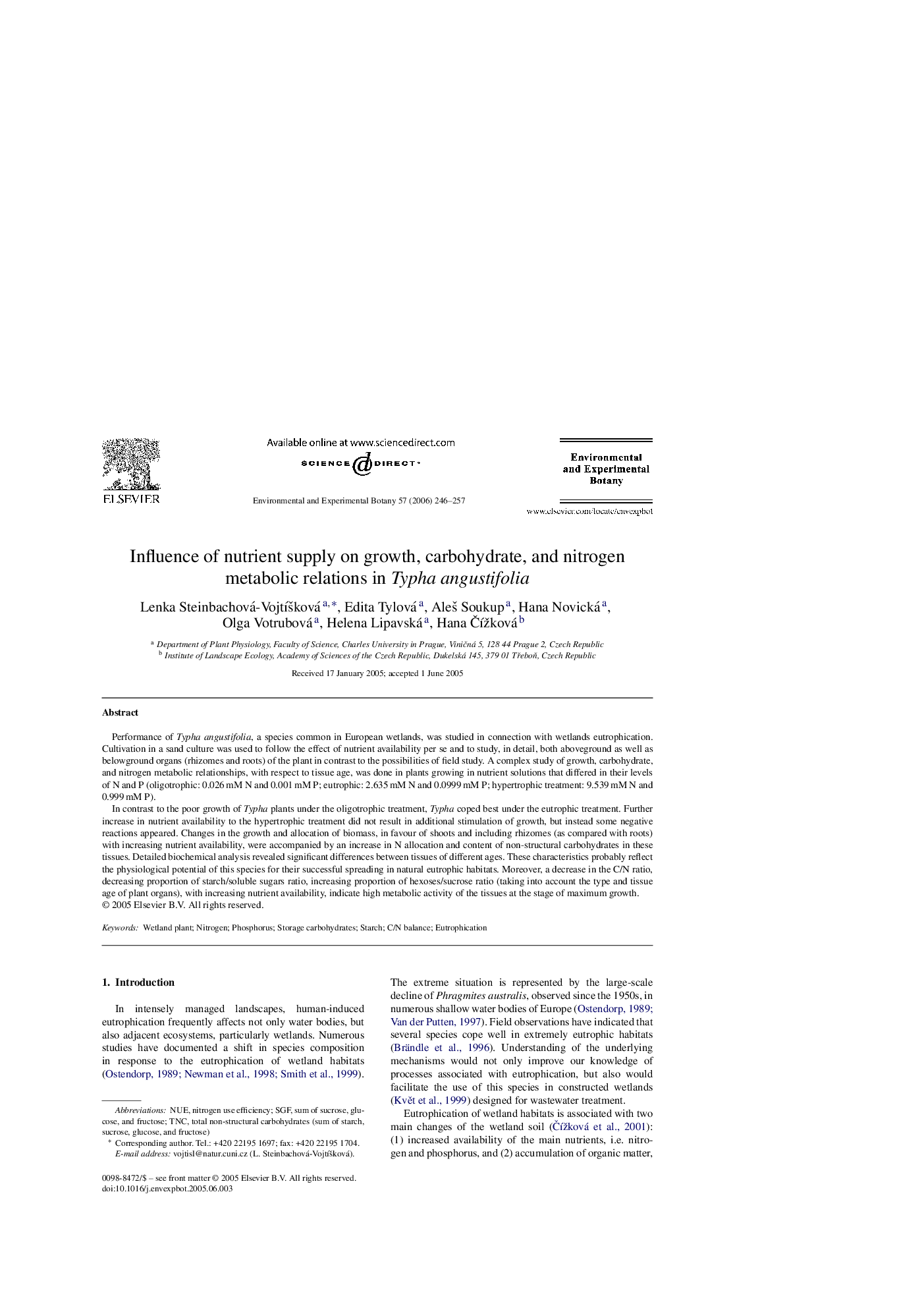| Article ID | Journal | Published Year | Pages | File Type |
|---|---|---|---|---|
| 4555551 | Environmental and Experimental Botany | 2006 | 12 Pages |
Abstract
In contrast to the poor growth of Typha plants under the oligotrophic treatment, Typha coped best under the eutrophic treatment. Further increase in nutrient availability to the hypertrophic treatment did not result in additional stimulation of growth, but instead some negative reactions appeared. Changes in the growth and allocation of biomass, in favour of shoots and including rhizomes (as compared with roots) with increasing nutrient availability, were accompanied by an increase in N allocation and content of non-structural carbohydrates in these tissues. Detailed biochemical analysis revealed significant differences between tissues of different ages. These characteristics probably reflect the physiological potential of this species for their successful spreading in natural eutrophic habitats. Moreover, a decrease in the C/N ratio, decreasing proportion of starch/soluble sugars ratio, increasing proportion of hexoses/sucrose ratio (taking into account the type and tissue age of plant organs), with increasing nutrient availability, indicate high metabolic activity of the tissues at the stage of maximum growth.
Keywords
Related Topics
Life Sciences
Agricultural and Biological Sciences
Ecology, Evolution, Behavior and Systematics
Authors
Lenka Steinbachová-VojtÃÅ¡ková, Edita Tylová, AleÅ¡ Soukup, Hana Novická, Olga Votrubová, Helena Lipavská, Hana ÄÞková,
